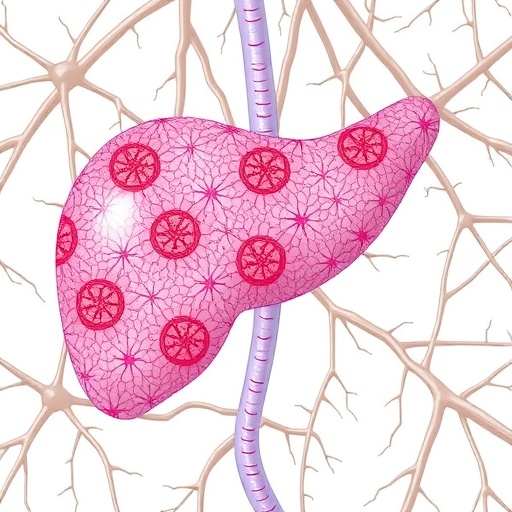PHILADELPHIA – Although black and Hispanic veterans with chronic kidney disease (CKD) are more likely than white patients to see a kidney specialist–a nephrologist–they are more likely to suffer disease progression from early stage to advanced kidney disease, reports a study published this month in the Journal of the American Society of Nephrology from researchers at the Perelman School of Medicine at the University of Pennsylvania. Although previous studies have indicated that access to nephrology care before kidney disease progresses to end stage is associated with better clinical outcomes, these results suggest that biologic and/or environmental factors may actually be central to racial disparities in CKD progression.
Previous research has found that while black and white patients experience similar rates of CKD, black patients were more likely to suffer from end stage renal disease. This led the authors to investigate whether limited access to a nephrologist could explain this rapid progression among black and Hispanic patients in a veteran patient population.
"Access to care is a major driver of disparities in many illnesses, but surprisingly, our findings show that may not be the case among veterans with CKD," said senior author Peter P. Reese, MD, MSCE, an associate professor of Medicine, Epidemiology in Biostatistics, Epidemiology, and Informatics, and Medical Ethics and Health Policy. "Our study could help researchers target efforts to prevent individuals with CKD from progressing to end stage kidney disease."
The study looked at a nationwide population of 56,767 patients in the Veterans Affairs healthcare system, most of whom were male (39,767 whites, 12,747 blacks, and 4,017 Hispanics) with stage 4 CKD, which is characterized by advanced kidney damage and a likely need for dialysis or a kidney transplant. Half of the non-Hispanic white patients visited a nephrologist, compared to 72 percent of blacks and 64 percent of Hispanics. Although fewer whites saw a nephrologist, only 14 percent of whites in the study progressed to stage 5 CKD, compared to 34 percent of blacks and 27 percent of Hispanics. These differences in risk of progression to stage 5 CKD persisted after accounting for important factors such as age, other illnesses, socioeconomic status, smoking history, and distance to the closest Veterans Affairs Medical Center.
"Now that we have evidence that limited access to care does not seem to influence disease progression in a population of veterans, researchers must delve into other potential contributing factors. Closer evaluation of other environmental exposures, like poor access to healthy fruits and vegetables, may help to pinpoint important catalysts for this disparity," said co-first author Jordana Cohen, MD, MSCE, an assistant professor of Epidemiology in Biostatistics, Epidemiology, and Informatics. "Our findings suggest that the main reason(s) for progression to end stage kidney disease is/are not something that nephrologists are treating."
The authors did not set out to evaluate the value of consulting with a nephrologist, and note that such appointments can help if a patient needs quicker referral for a kidney transplant or needs surgery in an arm to connect an artery to a vein in preparation for dialysis.
Other suspected causes of this disparity include genetic risks, such as APOL1 mutations, found almost exclusively among those of African ancestry. APOL1 mutations are known to increase the risk of many types of CKD, and have no known treatment options.
###
Additional authors on the study include Jonathan Suarez, Vishnu Potluri, Wei Yang, David E. Kaplan, Marina Serper, and Siddharth P. Shah. Kaplan, Serper, and Reese also serve in appointments at the Corporal Michael J. Crescenz Veterans Affairs Medical Center. This study was the result of Jonathan Suarez's thesis project for the Master's of Science in Clinical Epidemiology at the University of Pennsylvania.
The research was supported by National Institutes of Health (NIH) grants (5T32DK007005-44 and 1K23HL133843-02), as well as a Ben J. Lipps Research Fellowship grant from the American Society of Nephrology.
Penn Medicine is one of the world's leading academic medical centers, dedicated to the related missions of medical education, biomedical research, and excellence in patient care. Penn Medicine consists of the Raymond and Ruth Perelman School of Medicine at the University of Pennsylvania (founded in 1765 as the nation's first medical school) and the University of Pennsylvania Health System, which together form a $7.8 billion enterprise.
The Perelman School of Medicine has been ranked among the top medical schools in the United States for more than 20 years, according to U.S. News & World Report's survey of research-oriented medical schools. The School is consistently among the nation's top recipients of funding from the National Institutes of Health, with $405 million awarded in the 2017 fiscal year.
The University of Pennsylvania Health System's patient care facilities include: The Hospital of the University of Pennsylvania and Penn Presbyterian Medical Center — which are recognized as one of the nation's top "Honor Roll" hospitals by U.S. News & World Report — Chester County Hospital; Lancaster General Health; Penn Medicine Princeton Health; Penn Wissahickon Hospice; and Pennsylvania Hospital – the nation's first hospital, founded in 1751. Additional affiliated inpatient care facilities and services throughout the Philadelphia region include Good Shepherd Penn Partners, a partnership between Good Shepherd Rehabilitation Network and Penn Medicine, and Princeton House Behavioral Health, a leading provider of highly skilled and compassionate behavioral healthcare.
Penn Medicine is committed to improving lives and health through a variety of community-based programs and activities. In fiscal year 2017, Penn Medicine provided $500 million to benefit our community.
Media Contact
Greg Richter
[email protected]
215-614-1937
@PennMedNews
http://www.uphs.upenn.edu/news/
http://dx.doi.org/10.1681/ASN.2018040344




